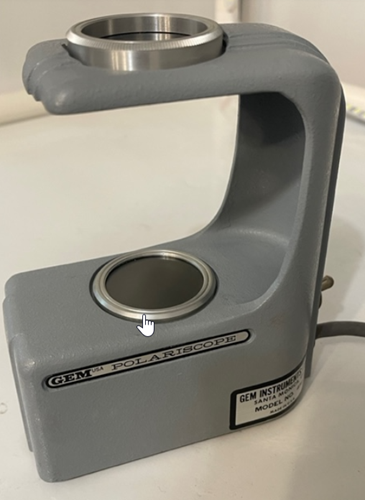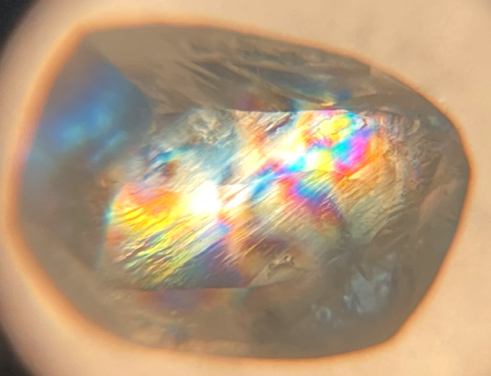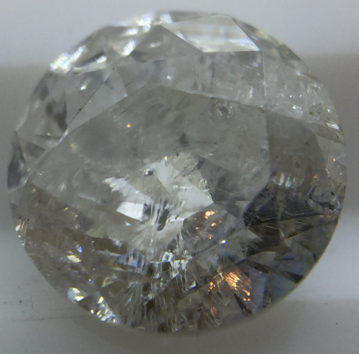Some people are surprised by the fact that many diamonds have what we call stress. One may ask the question; “how do I observe stress in a diamond?” Stress in diamonds can sometimes exhibit a halo-like disc or discs, around inclusions. These can be observed by using a 10x loupe. Then there are those that can only be seen by using a polariscope which contains two polarized lenses, and a light source. By placing a diamond on the lower lens, and then view it through the top lens. For greater affect, a loupe is used by holding it at focal length above the diamond and below the upper lens.

A polariscope used for detecting stress in diamonds
If a diamond has stress it would display an iridescent colour phenomenon called birefringence.

A dodecahedron diamond with severe stress
One may ask; “why does it matter?” Well, it does matter a lot to polishers. The last thing a polisher, sawyer or laser operator would want is for the stress to be released which could result in damage or destruction through the formation of feathers that appear along the tetrahedral planes of the diamond.
The next question would be: “What causes the stress?” If we consider that a diamond is formed in the earth’s mantle under tremendous pressure and a great deal of heat and when the diamonds are pushed to the surface through volcanic eruption, they are then liberated from the in-situ pressure which they ‘enjoyed’ at say 10 gigapascals down below in the earth’s mantle. Plastic deformation like we often see in large type 2A diamonds show stress in the lattices of the crystals even without the presence of inclusions.
Because diamond have a very low coefficient of expansion and the non-diamond inclusions have a higher coefficient of expansion, this disparity causes problems when we subject the diamonds to heat through the sawing, lasing or polishing processes, all of which causes heat of the diamond and the inclusions to rise. But when we re-heat the diamonds through our cutting process, the diamonds do not have the in-situ pressure to protect them. When enough material surrounds the stress zone, the stress could be contained, but if material is removed by polishing, a situation could arise that the stress could overcome the containing material resulting in feathers to form or worse yet, the diamond could shatter. I have seen Russian diamonds with olivine inclusions, explode, forming mini craters when the facets reach the inclusions. The great unknown factor is that it is hard or near impossible to predict when stress release is going to happen.
One of the worse disasters that I am aware of was a 10ct. D colour potentially internally flawless that had a tiny surface inclusion in a crown half that needed to be removed by a little final polishing. The unimaginable happened – the diamond shattered resulting in a near total loss.
Below is an image of a diamond that suffered the ultimate stress release. This was an SI clarity and had to be re-cut to GIA XXX. Sadly, it did not survive the table polishing process. It had a string of inclusions in one tetrahedral plane which then turned ugly as can be seen in the image below. This diamond showed very little birefringence before re-cutting and the stress release could have been the result of frictional drag of the diamond during the polishing process. Heat was not a factor in this case but rather a set of circumstances that caused the stress release.

A diamond which suffered stress release
As diamond cutters, we take extra care to limit heat generation during polishing by using diamond polishing spindles with dynamic cooling and then apply as little pressure as possible. Despite all our efforts, the image above is a sobering reality proving the unpredictability of the behaviour of stressed diamonds.


 RapNet Blog
RapNet Blog
![Diamonds 6[1][1]](/media/2120/diamonds-6-1-1.png)